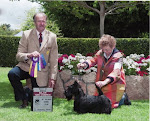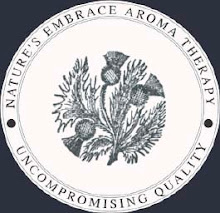Copied from Agweek.com
http://www.agweek.com/event/article/id/155964/publisher_ID/40/
"FARGO, N.D. — Stacy and Troy Hadrick of Vale, S.D., take the stage as quintessential young Dakota ranchers — except they’re talkers.
They say young farmer-rancher types like them have been too trusting of others to use the Internet and social media to fight back against groups they consider anti-animal agriculture. They urge farmers to tell their own stories, rather than have their industry twisted by journalists with hidden agendas.
The Hadricks spoke to North Dakota State University Ag Day students March 22 in a program titled “The Real Enemies of Agriculture.”
In their talk, the Hadricks take aim at groups like People for the Ethical Treatment of Animals, and the Humane Society of the United States, but also at farmers and ranchers themselves for failing to tell their own story.
The Hadricks’ biography is probably is a lot like the NDSU students who attended the program — perhaps a decade removed from the classroom.
Both are from ranches western South Dakota. Both went to South Dakota State University.
After graduating from college in 1999 — she in ag economics and ag business, he in animal science — the couple returned to the family Angus ranch operated by Stacy’s father and uncle — Ed and Rich Blair — in western South Dakota. Troy worked on the ranch. Stacy became a Meade County, S.D., extension educator. They live about four miles north of Bear Butte, a bowl-shaped solitary mountain east of Sturgis, S.D., a sacred site to Plains tribes and a northeast gateway to the Black Hills.
Meet the media
The Hadricks say their mindset changed about storytelling in March 2002, when the Blair Ranch hosted a nationally known writer named Michael Pollan.
Pollan told the family he wanted to write the story of a steer from “birth to steak.” Troy says Pollan ate meals with the family and “told me how he wanted to write this article, about the great things we do in the beef industry, and teach people how a steak gets on a plate.”
Pollan’s “Power Steer” story was published March 31, 2002, in the New York Times, but it was far from what the Hadricks expected. The story emphasized how “we abuse our livestock, that we’re polluting the air and that we pollute the water,” Troy says, and that “the food that I grow and that you people grow is making people sick.” “Other than calling me a ‘muscular post of a man,’ most of it was garbage,” Troy says.
The problem was one of emphasis.
For example, the Blairs and Hadricks had told Pollan was how they sometimes struggle during calving season to keep calves alive, bringing them into the kitchen or even the bathtub.
“He wrote that calving season was ‘a succession of sub-zero nights, yanking breeched babies from their bellowing mothers.’ It was like we lined them all up and just started jerking calves from them for fun,” Troy says.
Pollan focused on the growth implants, how the cattle are “standing in their own filth” and of the overwhelming odors. Pollan telephoned the family after the story was published, saying, “I suppose you’re mad at me” — making contact, but not apologizing. Troy says Pollan acknowledged to one of the Blairs that “sometimes you have to sensationalize to write a good story.”
The Hadricks wrote a protest letter to the editor of the New York Times and got about “about three sentences” of it published.
Reaction to the story was surprising.
Troy says the Monday after the story appeared out there was a drop in cash and futures prices.
The family got a call from someone wanting to buy the steer in the story — now only three weeks away from being finished, to take them to a refuge in upstate New York to “live out their natural life.” Another person called tell the family they’d “rot in hell” for their work.
The Hadricks say they spent about two years reeling from the Pollan experience. Then they started talking about their industry. After giving a speech in 2006, the Hadricks decided to form “Advocates for Agriculture” and went on the public speaking circuit. Traveling and talking has become a bigger part of their lives.
And the worst is . . .
Last year, they spoke about 20 times in more than a dozen states. This year, they’d already done 10 speeches by the end of March. They had just returned from the California Farm Bureau convention.
In their standard talk, the Hadricks offer a litany of horror stories about “anti-agriculture” groups, including:
In People for the Ethical Treatment of Animals. The group has an online museum,” which draws comparisons between lynching of blacks in the 1930s with techniques in a cattle slaughter. PETA of targets children on its Web site to post how they “saved animals and how they became vegetarian.” PETA posts statistics, including that vegetarians consume some 3000 gallons of water a year, while meat eaters consume about 4,000 gallons.
In The Sierra Club. The group would restrict how the government would accept bids on federal lands and would “force the government to accept” a competing bid “if it’s used for anything other than grazing.” They say the Sierra Club doesn’t consider a farm or ranch “sustainable” unless you “buy and sell everything as local as possible” and avoid risk management and forward-contracting, or fail to pay even part-time workers for vacation time and full benefits.
In Humane Society of the United States. HSUS has a $100 million annual budget and is intent on eliminating value for animals and ultimately replacing meat and animal-based foods in the diet with plant-based foods.
“This is their roadmap,” Troy says. “Don’t tell me they’re not a ‘vegan’ organization,” he says, referring to those who don’t consume animal flesh, animal products, and often honey, in their diets and, in some cases, yeast products.
In Animal Liberation Front. This group uses intimidation and that states the use of animals as “a source of food, clothing, entertainment or scientific knowledge is immoral and should be prevented by any means necessary.”
In I-29ers for Quality of Life. This group is based in Moody County, S.D., and opposes development of large-scale dairies. The group falsely claimed that two, 7,000-cow dairies would produce “more waste each day than the entire city of Sioux Falls, S.D.,” a city of 125,000 people.
But those aren’t the worst. Partly for dramatic effect, Troy and Stacy say the “worst enemy” of agriculture is the farmers and ranchers who stand idly by, not responding and simply dismissing critics as “a bunch of kooks.”
Thanks to the Internet, speaking up is getting easier, the Hadricks say.
Early this year, Troy discovered that the Casella family that owns the Yellow Tail brand had given a $100,000 donation to the HSUS organization.
On Feb. 3, Troy posted a 54-second YouTube video, titled: “Yellow Tail is now Yellow Fail. It shows himself, standing in a pen of Angus bulls, pouring out a bottle of Yellow Tail wine into the ground to protest the Australian winemaker’s support of what he and others consider an anti-animal agriculture organization. He linked the video to the Yellow Tail page.
The first day, there were more than 500 comments. Two days later, there were 4,000 comments. Farmers, pet owners, hunters, fishermen and the general public weighed in.
Troy says the Casella family saw the video. By Feb. 18, the family had issued a statement that in the future they wouldn’t donate to HSUS again, or any other animal rights organization. The company also got its name taken off the HSUS Web site.
More recently, the Pilot Travel Centers L.L.C. got a backlash when that company made a more modest donation to HSUS. Similar pressure from Internet messages prevailed, and the company announced it would not repeat the donation.
“In the last month, HSUS has lost five corporate sponsors,” Troy says. “How long does it take you to put up a Facebook comment?”
Stacy says that if the children of farmers and ranchers are to have “the same opportunities as we have,” farmers need to be more vocal and active. And farmers need to stick together as “team agriculture” and not bash competing commodity groups or animal species, Stacy says."
More Information: www.advocatesforag.com
www.facebook.com/advocatesforag
www.twitter.com/troyhadrick
Wednesday, March 31, 2010
Subscribe to:
Post Comments (Atom)













No comments:
Post a Comment